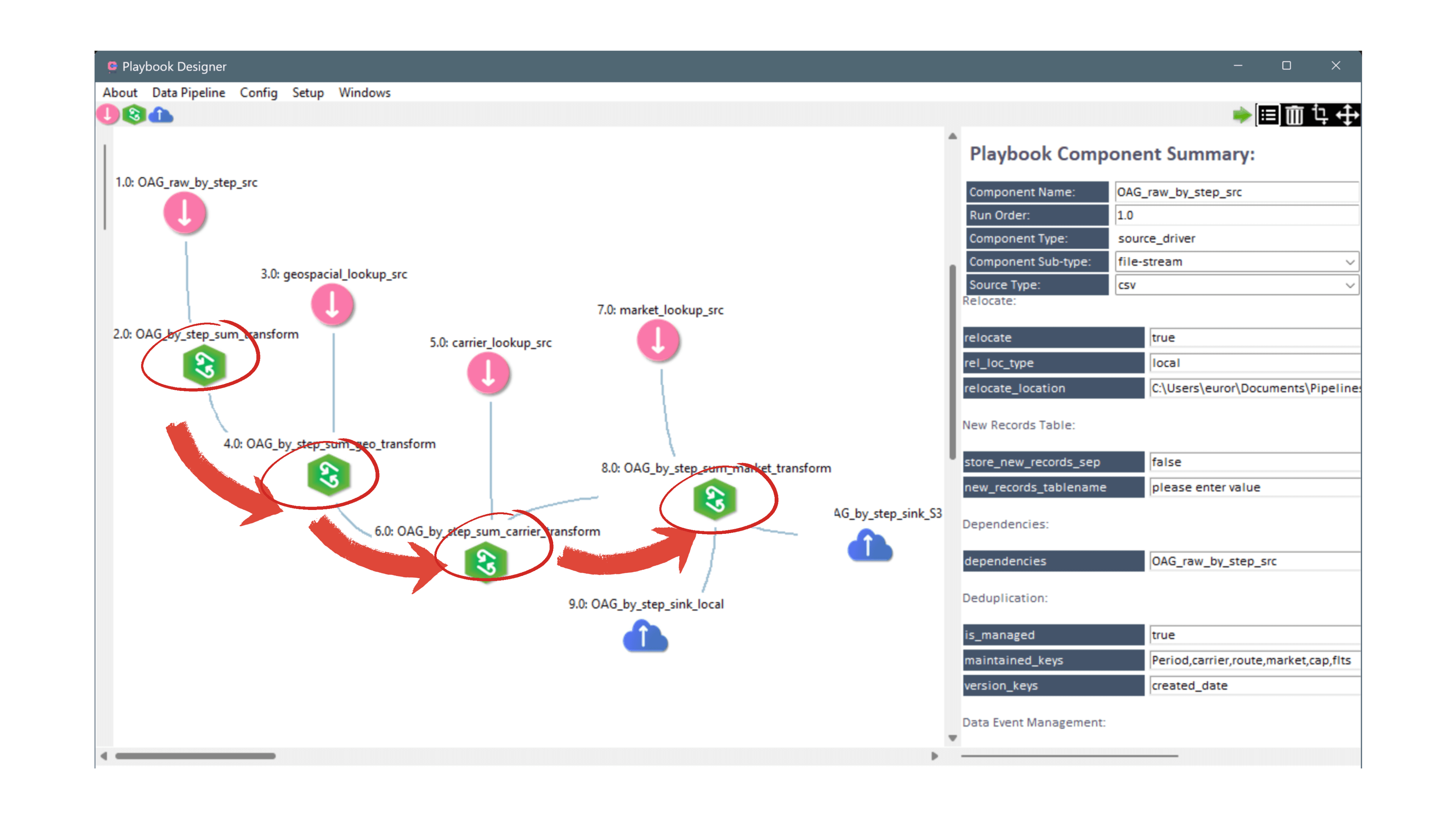Data Pipelines: From Raw Data to Real Results
I talk a lot about production Data Pipelines / ETL. After all, IOblend is all about data pipelines. They are the backbone of data analytics, flowing and mixing data like an intricate weave. Poor design can lead to scalability issues, high compute costs, poor data quality, service interruptions and loss of data.
Yet, I find it quite baffling just how often we encounter bad designs. A hodgepodge of different philosophies, tech and languages that do not integrate or scale well at all. The rage is all about GenAI today, but we mustn’t forget the basic building blocks that underpin the entire data industry.
So once again, let’s look at what you should consider when creating, deploying, and running a robust, high-performing data pipeline.
Data pipelines 101
The primary purpose of a data pipeline is to enable a smooth, automated flow of data. It is at the core of informed decision-making. There are all sorts of data pipelines out there: batch, real-time, end-to-end, ingest-only, CDC, data synch, etc. Data pipelines can range from basic data exploration to automated operational analytics to GenAI. Whatever the use case maybe, there will be a data pipeline associated with it.
Automation and efficiency: Data pipelines automate the transport and transformation of data. Efficiency is crucial in handling large volumes of data where manual processing would be impractical.
Data integrity and quality: Production data pipelines ensure data integrity by applying consistent rules and transformations, thus maintaining data quality throughout the process.
Scalability and flexibility: As an organisation grows, so does its data. Well-designed data pipelines scale with this growth, accommodating increasing volumes of data and new types of data sources.
Insights and analytics: Data pipelines play a key role in preparing data for analysis, ensuring that it’s in the right format and structure before consumption.
The way I see it, data pipelines proliferate everywhere where data is a key asset. They include e-commerce, where data pipelines assist in understanding customer behaviour, healthcare for patient data analysis, and finance for real-time market analysis. Any area that requires data to be collected, cleaned, aggregated, and analysed uses data pipelines.
Batch vs Real-Time (and all flavours in-between)
We often have passionate debates in the data circles around this topic. I’m not discussing the merits of either type in this blog. But the distinction between batch and real-time data pipelines is important to understand as it will drive the architecture.
Batch data pipelines process data in discrete chunks at scheduled times. They are suited for scenarios where near-instantaneous data processing is not critical. Most BI analytics work perfectly well on batch data, showing “historical” insights and trends.
In contrast, real-time data pipelines handle data continuously, processing it as it becomes available. This type is essential for applications like fraud detection or live recommendation systems where immediacy is key. Real-time data analytics are predominantly used in operational settings where automated decisions are made by systems on a continuous basis.
The business needs to plan their data architecture in accordance with their data analytics requirements. If you setup your estate around batch but start adding real-time data into the mix, you will encounter significant complexity and increased ops costs.
Design and development
Designing and developing production data pipelines is not simple. Here are the steps you must consider:
- Identify the data sources and the end goals.
- Choose the appropriate architecture (Lambda vs Kappa)
- Choose the right data processing framework based on these requirements.
- Select data storage solutions, ensuring scalability and performance.
- Define data transformation rules for consistency and quality.
- Integrate security measures to protect data integrity and privacy.
- Map the pipeline’s workflow, detailing each step in the data flow.
- Implement automation for efficient pipeline operation.
- Test the pipeline rigorously to ensure reliability under various conditions.
- Set up monitoring and logging for ongoing performance tracking.
- Set up CI/CD for robust development and deployment.
Which architecture?
The choice between Lambda and Kappa architectures significantly influences data pipeline design. The Lambda architecture involves maintaining two separate pipelines, one for batch processing and one for stream processing, converging at a later stage.
Conversely, the Kappa architecture simplifies this by using a single stream processing pipeline for both real-time and batch data. This approach reduces complexity but demands a robust stream processing system.
Architecture considerations
The decision to use Lambda or Kappa architecture often depends on the volume and velocity of data. High-velocity, real-time data leans towards Kappa, while scenarios requiring extensive historical data analysis benefit from Lambda. The decision depends on specific business needs, data characteristics, and the desired balance between real-time processing and comprehensive data analysis.
The vast majority of data analytics today are batch-based, so they most often sit atop of Lambda. If you only ever use batch (and plan to remain batch-only), Lambda works just fine.
However, if the requirements move towards more real-time analytics, Kappa is a more efficient choice. The costs and complexity of real-time data have come down considerably over the past few years, removing the biggest barriers for adoption.
Incidentally, IOblend is built around Kappa, making it extremely cost-effective for companies to work with real-time and batch data.
Always build modular
We have seen some truly terrifying data pipelines over the years. I’m sure you have as well. Some of the data pipelines were so convoluted that the engineers just left them as they were. They just couldn’t decipher the inner workings. And dreaded the day the pipeline would crash.
We always advocate for building data pipelines in a modular manner for that exact reason. Modular data pipeline design means constructing data pipelines in discrete, interchangeable components. Step by step. Each component in a modular pipeline is designed to perform a specific function or set of functions in the data processing sequence.
Got five joins? Split them into five distinct steps. Need a quality rule? Script it as a separate component. Lookups? Add one at time.

The modular approach offers several advantages:
Flexibility and scalability: Modular design allows for easy scaling of individual components to handle increased loads, without the need to redesign the entire pipeline.
Ease of maintenance and updates: With a modular setup, you can update or repair a single component without significantly impacting other parts of the pipeline.
Customisation and reusability: You can customise modules for specific needs and reuse across different pipelines or projects, enhancing efficiency and reducing development time.
Simplified testing and QC: You can test individual modules more easily than testing a monolithic pipeline, leading to better quality control and easier debugging. With IOblend, you test each component as you build it, so it makes it a delight to debug.
Adaptability to changing requirements: In dynamic environments where data processing requirements frequently change, modular pipelines can be quickly adapted by adding, removing, or modifying modules.
Interoperability: Modular designs often facilitate better interoperability between different systems and technologies, as you can design each module to interface with specific external processes or tools.
Cost-efficiency: You will save $$ due to the data pipeline’s flexibility and ease of maintenance.
However, there are also some challenges associated with modular pipeline design if you code them from scratch:
Complexity in integration: Ensuring seamless integration and communication between modules can be challenging and requires careful design and testing.
Overhead management: Managing multiple modules, especially in very large or complex pipelines, can introduce overhead in terms of coordination and resource allocation. Use appropriate tools to manage that efficiently.
Consistency in data handling: Maintaining consistency and data integrity across different modules requires robust design practices and data governance policies.
Modular designs allow for greater flexibility and scalability, enabling components to be updated or replaced independently. We highly recommend businesses adopt a modular design to their data pipelines.
IOblend inherently facilitates modular design. The tool makes it easy to plan and automatically integrate multiple distinct components into a seamless and robust data pipeline. You specify dependencies, “firing order”, and conditions with a few clicks and IOblend does the rest.
Don’t neglect data pipelines
As we can see, data pipelines are a critical component in the modern data ecosystem, enabling organisations to process and analyse data efficiently. The choice of pipeline architecture and design approach should be tailored to the specific needs and scale of the organisation. With the right pipelines in place, businesses will harness the full potential of their data, leading to more informed decisions and a competitive edge in their respective industries. And reduce development and operating cost.
We strongly believe that developing and maintaining production data pipelines should simple and encourage best practice. To that end, we have built a low code / no-code solution that embeds the production features into every single data pipeline.
Whatever your use case may be – data migration, simple or complex integrations, real-time and batch analytics, data syncing, pipeline automation, etc – IOblend will make it much easier and quicker to develop. Whether you do ETL or ELT, batch or real-time – it makes no difference. We cover all data integration uses cases.
IOblend presents a ground-breaking approach to IoT and data integration, revolutionizing the way businesses handle their data. It’s an all-in-one data integration accelerator, boasting real-time, production-grade, managed Apache Spark™ data pipelines that can be set up in mere minutes. This facilitates a massive acceleration in data migration projects, whether from on-prem to cloud or between clouds, thanks to its low code/no code development and automated data management and governance.
IOblend also simplifies the integration of streaming and batch data through Kappa architecture, significantly boosting the efficiency of operational analytics and MLOps. Its system enables the robust and cost-effective delivery of both centralized and federated data architectures, with low latency and massively parallelized data processing, capable of handling over 10 million transactions per second. Additionally, IOblend integrates seamlessly with leading cloud services like Snowflake and Microsoft Azure, underscoring its versatility and broad applicability in various data environments.
At its core, IOblend is an end-to-end enterprise data integration solution built with DataOps capability. It stands out as a versatile ETL product for building and managing data estates with high-grade data flows. The platform powers operational analytics and AI initiatives, drastically reducing the costs and development efforts associated with data projects and data science ventures. It’s engineered to connect to any source, perform in-memory transformations of streaming and batch data, and direct the results to any destination with minimal effort.
IOblend’s use cases are diverse and impactful. It streams live data from factories to automated forecasting models and channels data from IoT sensors to real-time monitoring applications, enabling automated decision-making based on live inputs and historical statistics. Additionally, it handles the movement of production-grade streaming and batch data to and from cloud data warehouses and lakes, powers data exchanges, and feeds applications with data that adheres to complex business rules and governance policies.
The platform comprises two core components: the IOblend Designer and the IOblend Engine. The IOblend Designer is a desktop GUI used for designing, building, and testing data pipeline DAGs, producing metadata that describes the data pipelines. The IOblend Engine, the heart of the system, converts this metadata into Spark streaming jobs executed on any Spark cluster. Available in Developer and Enterprise suites, IOblend supports both local and remote engine operations, catering to a wide range of development and operational needs. It also facilitates collaborative development and pipeline versioning, making it a robust tool for modern data management and analytics

Digital Twin Evolution: Big Data & AI with
The Industrial Renaissance: How Agentic AI and Big Data Power the Self-Optimising Digital Twin 🏭 Did You Know? A fully realised industrial Digital Twin, underpinned by real-time data, has been proven to reduce unplanned production downtime by up to 20%. The Digital Twin Evolution The Digital Twin is a sophisticated, living, virtual counterpart of a physical production system. It continuously ingests

Real-Time Risk Modelling with Legacy & Modern Data
Risk Modelling in Real-time: Integrating Legacy Oracle/HP Underwriting Data with Modern External Datasets 💼 Did you know that in the time it takes to brew a cup of tea, a real-time risk model could have processed enough data to flag over 60 million potential fraudulent insurance claims? The Real-Time Risk Modelling Imperative Real-time risk modelling is

Unify Clinical & Financial Data to Cut Readmissions
Clinical-Financial Synergy: The Seamless Integration of Clinical and Financial Data to Minimise Readmissions 🚑 Did You Know? Unnecessary hospital readmissions within 30 days represent a colossal financial burden, often reflecting suboptimal transitional care. Clinical-Financial Synergy: The Seamless Integration of Clinical and Financial Data to Minimise Readmissions The Convergence of Clinical and Financial Data The convergence of clinical and financial

Agentic Pipelines and Real-Time Data with Guardrails
The New Era of ETL: Agentic Pipelines and Real-Time Data with Guardrails For years, ETL meant one thing — moving and transforming data in predictable, scheduled batches, often using a multitude of complementary tools. It was practical, reliable, and familiar. But in 2025, well, that’s no longer enough. Let’s have a look at the shift

Real-Time Insurance Claims with CDC and Spark
From Batch to Real-Time: Accelerating Insurance Claims Processing with CDC and Spark 💼 Did you know? In the insurance sector, the move from overnight batch processing to real-time stream processing has been shown to reduce the average claims settlement time from several days to under an hour in highly automated systems. Real-Time Data and Insurance

Agentic AI: The New Standard for ETL Governance
Autonomous Finance: Agentic AI as the New Standard for ETL Governance and Resilience 📌 Did You Know? Autonomous data quality agents deployed by leading financial institutions have been shown to proactively detect and correct up to 95% of critical data quality issues. The Agentic AI Concept Agentic Artificial Intelligence (AI) represents the progression beyond simple prompt-and-response

